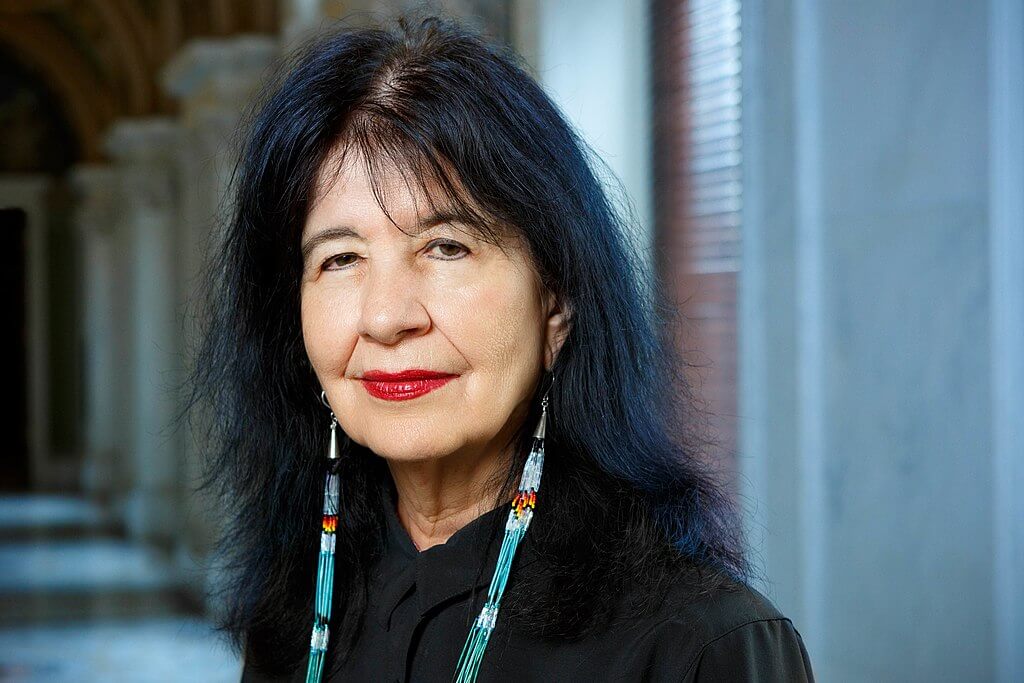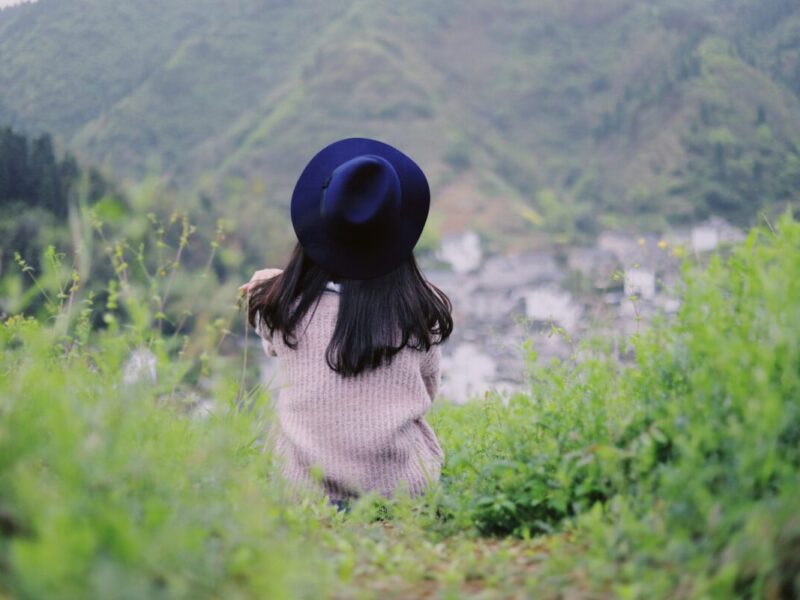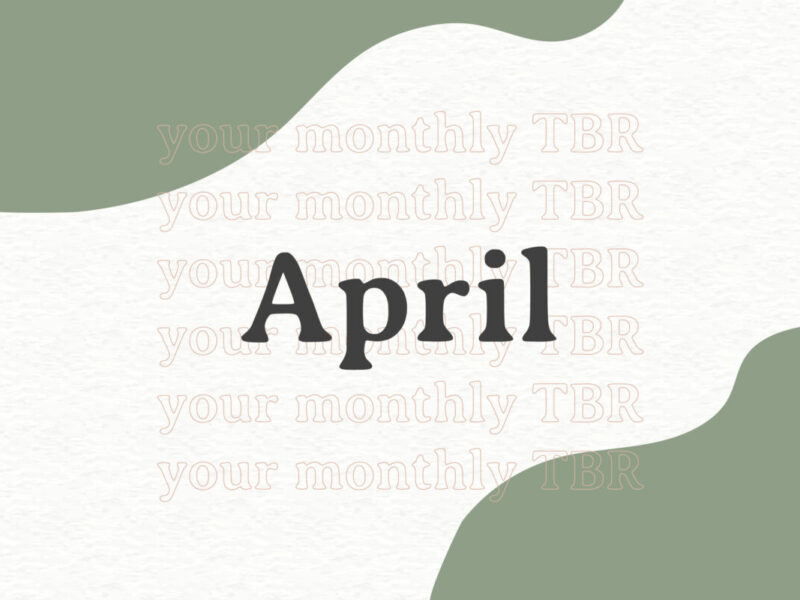Decolonize Your Reading List With These Important Indigenous Poets
Native American stories and culture continue to have a strong impact on today’s poetry scene. In 2019, Joy Harjo, a member of the Creek tribe and the author of 14 poetry collections, became the U.S. Poet Laureate, representing one of the art form’s highest honors. Other Native poets hold honors that range from Guggenheim fellowships to National Book Awards.
Despite these accolades, indigenous writers are still underrepresented in poetry and other literary genres, with markedly lower numbers in book publishing and publicity. One step to equalizing the industry—resulting in more diverse, unique, and highly personal poetry for all of us to enjoy—depends on supporting the work of these voices. Though the list of brilliant and bold indigenous poets is ever-growing, let these four Read Poetry recs serve as an entry point.
1. Natalie Diaz (@NatalieGDiaz on Twitter)
Mojave poet Diaz incorporates her culture into nearly every facet of her writing, having penned the two collections When My Brother Was an Aztec and Postcolonial Love Poem. A former fellow of the Native Arts Council Foundation, Diaz now works with the last speakers of Mojave, leading a language revitalization program. Diaz’s poems blend myths from many different cultures, as well as reflect an urgency and insistence on Native survival amid continual violence and oppression. Diaz has said her poems stem from an insatiable, cultural “hunger.”
In her poem “Abecedarian Requiring Further Examination of Anglikan Seraphym Subjugation of a Wild Indian Reservation,” Diaz approaches poetry from her characteristic cross-cultural lens, juxtaposing Native imagery and ways of life with Christian metaphors. In doing so, she asks the reader to reconsider this familiar image—evoking angels as a kind of white saviorism and a reckoning with imperialism, themes she builds on in Postcolonial Love Poem.
“Remember what happened last time / some white god came floating across the ocean? / Truth is, there may be angels, but if there are angels / up there, living on clouds or sitting on thrones across the sea wearing / velvet robes and golden rings, drinking whiskey from silver cups, / we’re better off if they stay rich and fat and ugly and / ’xactly where they are—in their own distant heavens,” writes Diaz.
2. dg nanouk okpik
A past winner of the American Book Award and an Inupiaq-Inuit poet, okpik reinvents the pastoral, diversifying this classic theme and displaying stunning lyricism. Through her poems about the Alaskan landscape, okpik offers a view into her world and culture. These rich environmental poems connect humanity with a larger world, inviting an appreciation for nature, animals, and creation. This endows okpik’s work with a sense of timelessness, blurring the past, present, and future into an interconnected meditation. Following this perspective, okpik is dedicated to teaching poetry “as a healing art” in workshops at the Museum of Indian Arts and Culture in Santa Fe, New Mexico.
In “When White Hawks Come,” okpik roots herself once again in the natural world. She juxtaposes stillness and action, as her recounting of a quiet moment seems to reverberate with spirited anticipation. “I dreamt / the spirit of the codfish; / in the rafters of the mind; / fly out into the winter’s / blue night / mirth off alder / tendrils sashay; / while I set up / my winter tent.”
3. Layli Long Soldier
A National Book Critics Circle award winner and recipient of a Whiting Award, Long Soldier is a citizen of the Oglala Lakota tribe. Her work investigates erasure of Native people and representation in westernized society, most specifically analyzing how government actions have driven this. In her collection Whereas, Long Soldier responds to the official U.S. congressional apology for genocidal policies, questioning what makes an apology true and genuine, as well as what role an apology can play. In the face of such violent and painful themes, Long Soldier also writes beautifully about motherhood, considering what it means to raise her daughter in both Native traditions and a larger, flawed country.
In “WHEREAS,” the titular poem from her acclaimed book, Long Soldier writes about the persistent microaggressions that indigenous people face, underlining a societal lack of awareness toward vibrant Native culture. “It’s here we roll along the pavement into hills of conversation we share a ride we share a country but live in alternate nations and here I must tell them what they don’t know or, should I? Should I is the moment to seize,” writes Long Soldier. “And before I know it I say Well you know Native people as in tribes as in ‘people’ living over there are people with their own nations each with its own government and flag they rise to their own national songs and sing in their own languages, even. And by there I mean here all around us I remind them.”
4. Jake Skeets (@JakeSkeets on Twitter)
Navajo poet Skeets, whose book Eyes Bottle Dark with a Mouthful of Flowers was selected for the 2018 National Poetry Series, writes from the intersections of Native and queer identities. Skeets’ work creates a parallel between the types of violence both populations face, contrasting this brutality with gorgeous, resilient landscapes.
In “Buffalograss,” this imagery helps Skeets achieve a spectacular, descriptive sense of intimacy in the poem, bringing the reader not only into a lush setting, but into a relationship: “Barely-morning pink curtains / drape an open window. Roaches scatter, / the letter t vibrating in cottonwoods. / His hair horsetail and snakeweed.”
Want more Native poetry? Look to the new anthology When the Light of the World Was Subdued, Our Songs Came Through, which unites 160 indigenous poets from more than 100 tribes into one collection.




